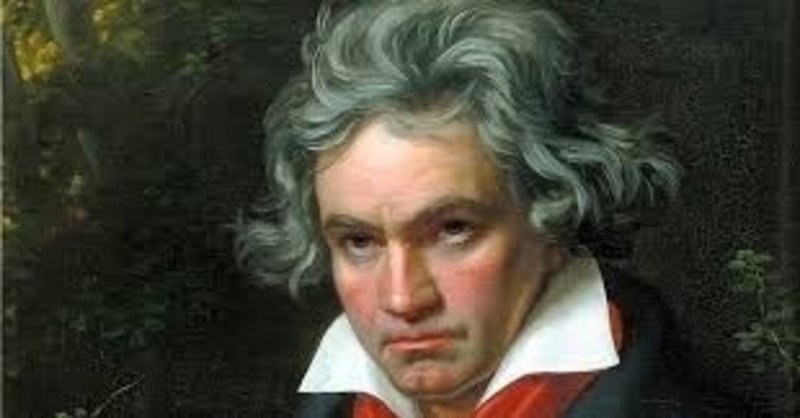
ベートーヴェンの革命:『エロイカ』の衝撃
ベートーヴェンのシンフォニーの中でも、「エロイカ」は特別な位置を占めています。彼が耳の病を抱えながらも音楽の新たな地平を切り開こうとした意志が、この作品には色濃く表れています。
元々はナポレオンに捧げられる予定でしたが、彼の皇帝即位を知ったベートーヴェンは憤慨し、曲名を「英雄」と改めました。この変更は、個人への賛美から、自由と平等の理想を追求するすべての人々への讃歌へと意味合いを変えたのです。
その規模と構造においても、「エロイカ」は画期的です。約50分の演奏時間は、当時の交響曲としては異例の長さでした。
第1楽章では、展開部で主題を大胆に変形させ、再現部では主題を省略するという革新的な手法が用いられています。第2楽章の葬送行進曲は、英雄の死を悼む悲劇的な美しさを持っています。
第3楽章のスケルツォとトリオは、英雄の活力と勇気を音楽で描き出しています。そして、第4楽章の変奏曲形式は、英雄の栄光と喜びを祝福しています。
この作品は、ベートーヴェンの交響曲の中でも特に人気が高く、多くの指揮者や演奏家によって取り上げられています。私自身もこの曲に深い感銘を受けており、その魅力は何度聴いても色褪せることがありません。
音楽的な革新と人間的な情熱が見事に融合した「エロイカ」は、ベートーヴェンの傑作として称えられるにふさわしい作品です。
フルトヴェングラーによる「エロイカ」の演奏は数多く残されていますが、特に「ウラニアのエロイカ」(1944年)と1952年のスタジオ録音は、その最高峰とされています。1952年の録音は、荘重なテンポと深い感情表現で知られる名演です。一方で、1944年の演奏は、実演ならではのドラマティックさが際立っています。
第1楽章の緩急自在のテンポや強弱の変化、そして大胆なアッチェレランドは、聴く者に強烈な印象を与えます。第2楽章の情感豊かな演奏は、聴き手に深い感動を呼び起こします。そして、終楽章の終結部に向けた力強い演奏は、聴き手の心を強く打ちます。
これらの演奏は、同じ指揮者によるものとは思えないほど対照的ですが、音楽の精神的な深みを追求するという点では共通しています。
Beethoven's Revolution: The Impact of "Eroica"
Among Beethoven's symphonies, the Eroica occupies a special place. This work clearly reflects his determination to open up new horizons in music even though he suffered from an ear disease.
It was originally intended to be dedicated to Napoleon, but when Beethoven learned of Napoleon's accession to the throne, he was furious and changed the title to "Heroes." This change changed the meaning from an ode to the individual to a hymn to all people who pursue the ideals of freedom and equality.
Eroica is also groundbreaking in its scale and structure. The performance time, approximately 50 minutes, was unusually long for a symphony at the time.
The first movement uses an innovative technique of boldly transforming the theme in the development section and omitting the theme in the reproduction section. The second movement, the funeral march, has a tragic beauty as it mourns the death of a hero.
The third movement, the scherzo and trio, musically depicts the hero's vitality and courage. The variation form of the fourth movement celebrates the hero's glory and joy.
This work is one of Beethoven's most popular symphonies, and has been featured by many conductors and musicians. I myself am deeply impressed by this song, and its charm never fades no matter how many times I listen to it.
The Eroica is a perfect combination of musical innovation and human passion, and is worthy of being hailed as Beethoven's masterpiece.
Many performances of the Eroica by Furtwängler remain, but the best are considered to be the best of them, especially the Eroica de Urania (1944) and the 1952 studio recording. The 1952 recording is a masterpiece known for its solemn tempo and deep emotional expression. On the other hand, the performance in 1944 stands out for its dramatic nature that can only be achieved by a live performance.
The first movement's variable tempo, dynamic changes, and bold accelerando leave a strong impression on the listener. The emotional performance of the second movement evokes deep emotion in the listener. The powerful performance towards the end of the final movement strongly touches the hearts of the listeners.
These performances are so contrasting that it is hard to believe they were performed by the same conductor, but they have in common that they pursue the spiritual depth of music.
よろしければサポートお願いします! いただいたサポートはクリエイターとしての活動費に使わせていただきます!
